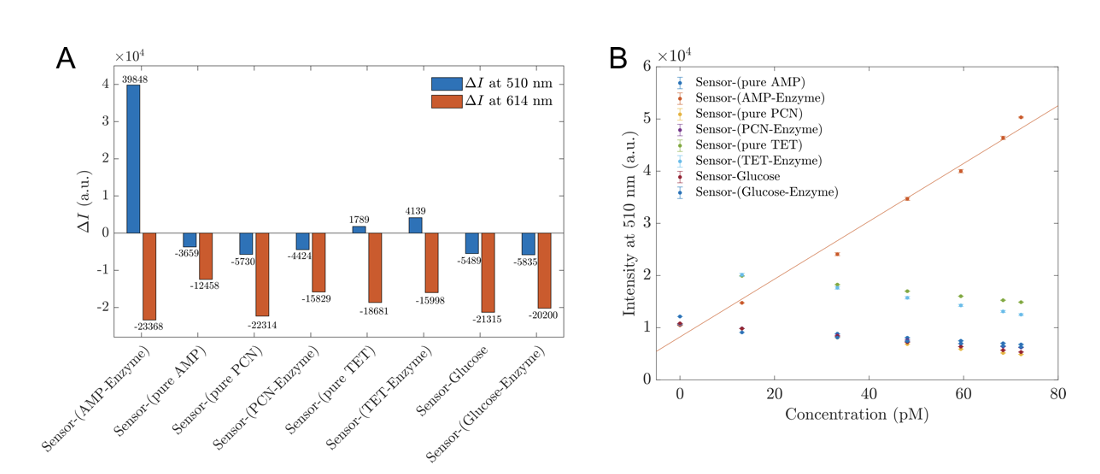[VinUni, May 2024] – Researchers at the VinUni-Illinois Smart Health Center (VISHC) have made a significant leap in antibiotic detection technology. The team, led by Dr. Mai Tran in collaboration with a researcher at HUST, has developed a novel, highly accurate, and reliable dual-channel fluorescent sensor specifically designed for detecting ampicillin. Their research, now published in the prestigious Nature Scientific Reports, holds potential implications for healthcare, environmental safety, and the food industry.
The detection of antibiotics such as ampicillin is crucial in today’s world. Its widespread use in medical, environmental, and agricultural sectors calls for accurate monitoring due to rising antibiotic resistance and the potential contamination of food and water. While traditional methods like HPLC and LC-MS have proven effective, their complexity often limits their practical application.
To address this challenge, the VISHC research team has developed a biosensor based on environmentally friendly chitosan-coated Mn-doped ZnS nanomaterials. This dual-channel fluorescent sensor can detect ampicillin in the range of 13.1 to 72.2 pM with unprecedented sensitivity, achieving a detection limit as low as 8.24 pM (Figure 1).
 Figure 1. The SEM image of sensing material and the dual-channel (at 510 and 614 nm) fluorescent sensors while detecting AMP treated by beta-lactamase.
Figure 1. The SEM image of sensing material and the dual-channel (at 510 and 614 nm) fluorescent sensors while detecting AMP treated by beta-lactamase.
The new sensor also demonstrated a remarkable ability to differentiate ampicillin from similar compounds like penicillin, tetracycline, and glucose, proving its high specificity and reliability in complex matrices (Figure 2).
 Figure 2. The proposed sensor has high selectivity over penicillin, tetracycline, and glucose.
Figure 2. The proposed sensor has high selectivity over penicillin, tetracycline, and glucose.
“Our work aims to lay the foundation for a simple yet powerful biosensing platform capable of differentiating and detecting AMP with high sensitivity, stability, and selectivity. We believe that, with the ability to accurately detect trace amounts of AMP, this technology has the potential to significantly impact various fields, including healthcare, environmental monitoring, and food safety” said Dr. Mai Tran.
This pioneering study exemplifies VISHC’s commitment to solving critical biomedical challenges with practical, cost-effective solutions.
Editor’s Note: The full-text of the paper can be accessed at https://www.nature.com/articles/s41598-024-59772-3